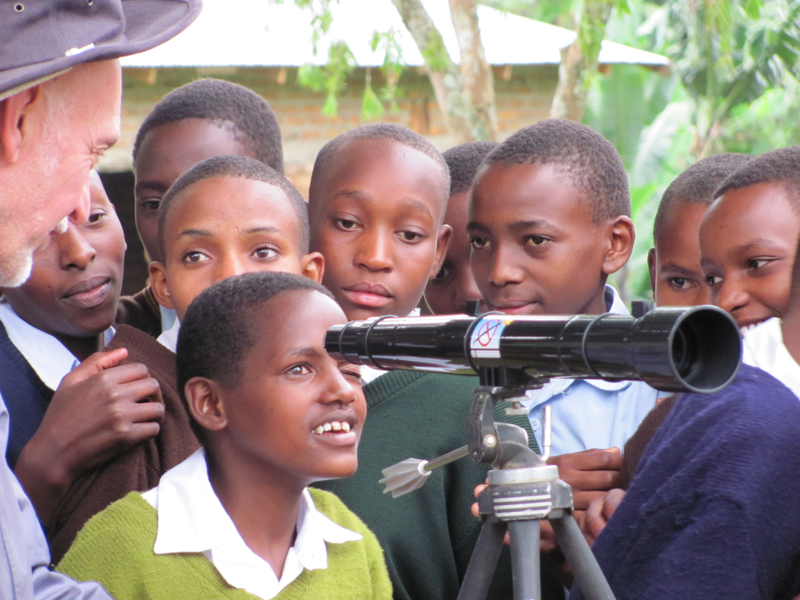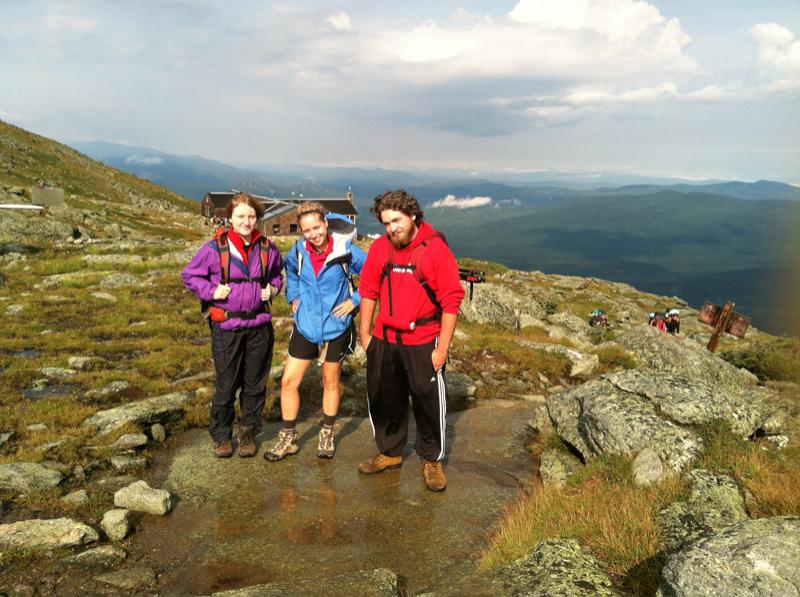Galileoscopes in Classrooms
Fall
2012
Interactions - SPS Chapters in Action
Galileoscopes in Classrooms
Exciting Kids about Astronomy and Physics
By:Coty Tatge, KelliAnn Anderson, and Zach Troyer, Carthage College

Four hundred years after Galileo’s first telescope observations, the year 2009 was celebrated as the International Year of Astronomy (IYA). Several big, worldwide initiatives were launched to engage people with astronomy. Ranking among the largest was the Galileoscope Project (http://galileoscope.org). One of our physics professors, Doug Arion, helped start Galileoscope, which is still going strong three years later.
You may be familiar with the inexpensive telescopes sold in stores. They’re often difficult to use and don’t give good viewing. That’s the kind of experience that won’t turn anyone on to astronomy. Well, the Galileoscope team realized how big a problem this is and developed a new telescope to get people excited—one that has high optical and mechanical quality, comes with an educational kit, and is very inexpensive so that people all over the world can afford it.
There are now more than 200,000 Galileoscopes in use in more than 100 countries! Members of our SPS chapter used the telescopes for astronomy outreach programs this summer, and it was great to hear people looking through Galileoscopes exclaim, “Wow, I really can see Saturn’s rings!”
Galileoscope continues today as a legacy project of the IYA, manufacturing and distributing telescopes for individuals, schools, and other science education organizations. One new project called Telescopes 4 Teachers (T4T, www.telescopes4teachers.org) lets people make tax-deductible donations through Astrosphere New Media, a nonprofit astronomy outreach group. The donations pay for Galileoscopes to be sent to teachers or schools designated by the donors.
T4T isn’t the first such donation program. During the IYA more than 7,000 Galileoscopes were put into use in developing nations. An observatory in South Africa distributed the donated telescopes. But other requests came in from people who wanted to send telescopes to schools. T4T is the best way to make that happen.
The T4T program isn't the only way we’ve been working with Galileoscopes to help improve science education. A new astronomy education and outreach program partners Carthage College and the Appalachian Mountain Club (AMC), one of the largest and oldest outdoors and nature education organizations in the country. The three of us, all Carthage physics students and SPS members, worked with Prof. Arion and spent the summer in New Hampshire, helping out with programs that included solar observations, night sky observations, and public lectures at AMC lodges and high mountain huts.
It’s fun to hike telescopes up into the mountains and show people the sky from dark, beautiful sites. In the first year we talked about the sky with more than 2,000 visitors!
In addition to using larger, commercial telescopes to do sky shows, we also used Galileoscopes in workshops with scout groups, camp groups, and kids of all ages, promoting T4T to as wide an audience as possible. Guests have been surprised at how well the Galileoscopes work, especially given how inexpensive the devices are. We’re hoping that the visitors have great experiences at our workshops, continue to be interested in astronomy, and maybe purchase a Galileoscope (or two!) so they have a great tool with which to observe the sky.
It has been a great experience working with the public, especially with kids, and getting people excited about the sky. SPS chapters can get involved by using Galileoscopes for their own outreach programs and fund-raisers, and by promoting the T4T program. The telescopes make great Christmas gifts, too! //

